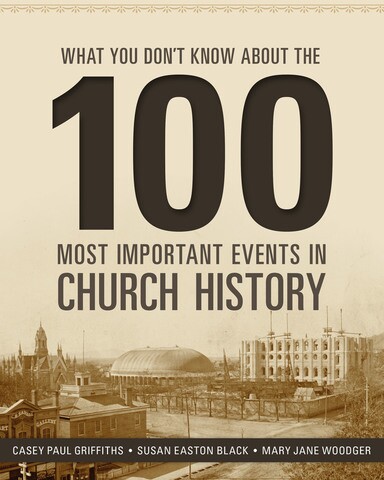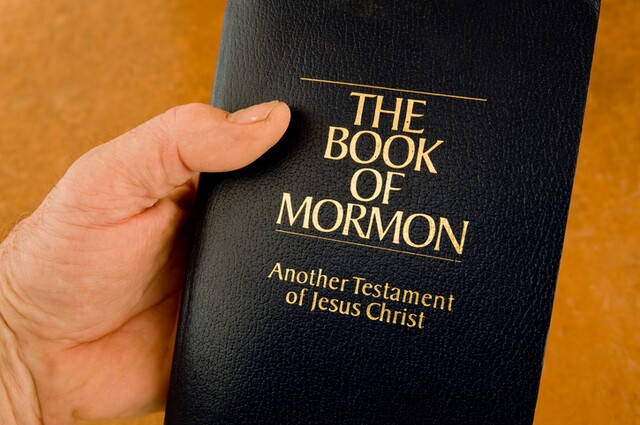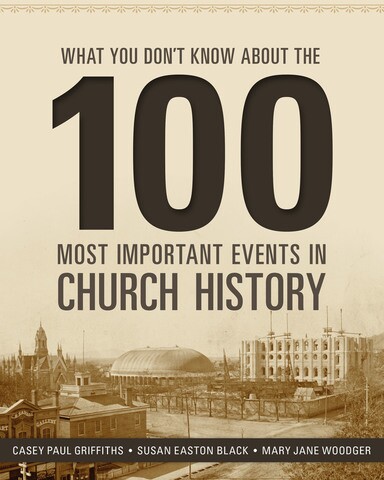Recent work by scholars on the coming forth of the Book of Mormon has led to several major shifts in the way these events are viewed by members of the Church. Recently, the Church published a Gospel Topics essay on the translation process to clarify some of the historical questions surrounding the coming forth of this sacred book. With an abundance of new scholarship in this area, there are a multitude of new insights to be gained. Here are five things you might not have known about the coming forth of the Book of Mormon:
1. Joseph Smith used multiple instruments of translation.
While it is noteworthy that the two individuals most involved in the translation process—Joseph Smith and Oliver Cowdery—said the least about it, other witnesses from the period make it clear that several different instruments were utilized by the Prophet and his scribes during the translation process. First, Joseph utilized the Nephite interpreters mentioned in the Book of Mormon (Mosiah 8:13, 28:20, Alma 37:21, Ether 3:23). In the 1842 Wentworth letter, Joseph described them as “a curious instrument which the ancients called Urim and Thummim, which consisted of two transparent stones set in the rim of a bow fastened to a breastplate.”
According to Emma Smith, Joseph also used a brown seer stone during the translation process. According to David Whitmer, one of the three witnesses of the Book of Mormon, Joseph gave the brown stone to Oliver Cowdery after the translation process was finished. Oliver’s widow, Elizabeth Ann Whitmer Cowdery, gave the stone to Phineas Young, the brother of Brigham Young, who then gave the stone to the Church. In 2015, as part of the Joseph Smith Papers project, the Church published the first photographs of the brown seer stone.
Some sources suggest the Joseph Smith may have also possessed other seer stones. One Palmyra resident, Pomeroy Tucker, recalled that Joseph possessed a seer stone which had a “whitish, glassy appearance, though opaque, resembling quartz.” While some have suggested that Joseph only used the seer stones during his early work, there is evidence that he used them throughout his entire prophetic ministry. Wilford Woodruff recorded that in 1841 Joseph Smith showed him a seer stone. He wrote, “I had the privilege of seeing for the first time in my day the Urim & Thummim.” Joseph appears to have used the term “Urim and Thummim” as a description of instruments used in obtaining divine revelation.
2. Women played an important role in the translation process.
Women also played an important role in the translation process. According to Joseph Knight, Sr., an early associate of the Prophet, during a meeting between Joseph and the angel Moroni held in September 1826, the angel told Joseph he could have the book the following year “if he brought the right person with him.” According to Knight, Joseph “looked into his glass [seer stone] and found it was Emma Hale, daughter of old Mr. Hale of Pennsylvany.” When Joseph arrived at the Hill Cumorah the next year, Emma accompanied him and waited in the wagon below while he met with the angel. Emma acted as a scribe during part of the translation process. She later recalled, “When my husband was translating the Book of Mormon, I wrote part of it, as he dictated each sentence, word for word.” Emma also urged Joseph to travel to Palmyra to seek the lost manuscript, even though she had just lost their first child and nearly lost her life during the birth.
Even though the three and eight witnesses chosen for the Book of Mormon were male, a tradition within the Whitmer family also adds Mary Musselman Whitmer, the family matriarch, as an unofficial witness of the Book of Mormon. According to several members of the Whitmer family, Though not listed as an official witness of the Book of Mormon, Mary Whitmer (1778-1856), the matriarch of the Whitmer family, was also shown the plates. This account came from an 1878 interview David Whitmer gave to Orson Pratt and Joseph F. Smith. Apparently, while the final stages of the translation were taking place in her home, Mary Whitmer became overwhelmed at the amount of work necessary to take care of her family and their guests. On an excursion to milk the family cows, she was met by “old man” who told her in a calm, friendly tone, “You have been very faithful and diligent in your labors, but you are tired because of the increase of your toil, it is proper therefore that you should receive a witness that your faith may be strengthened.” According to another account provided by John C. Whitmer, the stranger then “untied his knapsack and showed her a bundle of plates, which in size and appearance corresponded with description subsequently given by the witnesses of the Book of Mormon . . . he told her to be patient and faithful in bearing her burden a little longer.” According to John C. Whitmer, Mary was “a strong believer in the Book of Mormon until the day of her death.”
3. Some believe that Martin Harris’s wife burned the lost 116 pages of the Book of Lehi.
One of the most dramatic episodes in the story of the coming forth of the Book of Mormon is the story of the lost manuscript. When the Book of Mormon was first printed in 1830, it included a preface written by Joseph Smith where he spoke of “one hundred and sixteen pages, the which I took from the Book of Lehi” which “some person or persons have stolen and kept from me, notwithstanding my utmost exertions to recover it again.” While the details surrounding the involvement of Martin Harris, and his wife, Lucy, are relatively well known to the members of the Church, the question remains, what happened to the lost manuscript?
Even today the answer is unknown. According to Lucy Mack Smith, when Martin Harris arrived home to Palmyra, his wife, Lucy, “seemed highly pleased with what she heard and entered into the spirit of it so much that she gave her husband the privilege of locking it up in a set of drawers which she had never permitted him to look into.” A few days later Martin broke the lock in order to show the manuscript to a friend. Lucy Mack Smith, the mother of Joseph Smith, believed that this action so enraged Lucy Harris that she secretly took the manuscript and hid it from Martin. If Lucy Harris did take the manuscript, what she did with it remains unknown. Years after the incident, rumors circulated through Palmyra that Lucy may have destroyed the manuscript. One local resident recounted rumors that he heard Lucy Harris “say she burned the papers. She was pretty high on combativeness.” He continued, “She says she burned them up. And there was no mistake, but she did. They were never found; never came to light.” Another former resident claimed that Lucy Harris stole the manuscript and passed it off to “a certain Dr. Seymour” for an unknown purpose. The ultimate fate of the lost manuscript remains a mystery.
4. In some ways, the publication of the Book of Mormon was as miraculous as its translation.
Joseph Smith negotiated with Egbert B. Grandin—a Palmyra printer, bookseller, and publisher of the Wayne Sentinel—to print the Book of Mormon manuscript. Initially, Grandin declined, “believing the whole affair to be a wicked imposture and a scheme to defraud Mr. [Martin] Harris.” The response was the same when Joseph Smith met with Thurlow Weed, former publisher of the Rochester Daily Telegraph and then editor of the Rochester Anti-Masonic Enquirer. Joseph and Martin Harris called on Elihu F. Marshall, a book publisher in Rochester, New York. Although Marshall agreed to publish the manuscript, his price was exorbitant.
Grandin eventually relented after taking “the advice of several discrete, fair-minded neighbors,” who assured him that his connection with the book would be nothing more than a business matter. Convinced that Martin Harris would make good on their contractual agreement, a relieved Grandin resumed printing the Book of Mormon. On March 19, 1830, through the Wayne Sentinel, Grandin announced, “The ‘Book of Mormon’ will be ready for sale in the course of next week.” On March 26, 1830, he advertised, “First Public Sale of the Book of Mormon: the above work, containing about 600 pages, large Deuodecimo, is now for sale, wholesale and retail, at the Palmyra Bookstore, by E. B. Grandin.” The price of the Book of Mormon was equivalent to a two-day wage of an adult laborer. The price ranged from $1.25 to $1.75 per book.
Joseph Smith was not in Palmyra when Martin Harris gave the first printed copy of the Book of Mormon to his brother Emer Harris on March 26, 1830. He arrived in town a few days later and was surprised to find Martin Harris crossing the road ahead with “a Bunch of morman Books.” Martin greeted him by saying, “‘The Books will not sell for no Body wants them.’ But Joseph said, ‘I think they will sell well.’”
5. It took time for Church members to fully accept the Book of Mormon as a source of doctrine.
Almost immediately after its publication, the Book of Mormon began working miracles in the hearts of its readers. Early Church figures vital to the future of Mormonism, such as Parley P. Pratt and Brigham Young, found truth in the book and were converted to the new movement. As a foundational work of doctrine, however, it took time for the Book of Mormon to receive full acceptance as a source for doctrine in the Church. One review of early Church literature found that there were 1,489 citations to the Bible, compared to 77 in the Book of Mormon, or a 19:1 ratio. An examination of the Nauvoo discourses of Joseph Smith revealed allusions to 451 different biblical passages given by the Prophet, compared to just 22 references to the Book of Mormon, or a 21:1 ratio. Even in the 20th century, the Book of Mormon was infrequently cited in general conference and wasn’t a part of regular curriculum in Church education until the 1960s. If the success of the coming forth of the Book of Mormon is not measured just by the translation but its acceptance among the members of the Church, perhaps no person deserves more credit than Ezra Taft Benson, the president of the Church from 1985 to 1993.
Before Ezra Taft Benson came to the presidency, most Latter-day Saints had no idea they were guilty of not using the Book of Mormon enough in their studies. Historian Grant Underwood analyzed early Latter-day Saint literature and found that the Book of Mormon was infrequently cited in comparison with the Bible. Richard Galbraith studied scriptural references cited in general conference and found that only twelve percent of all scriptural references were from Book of Mormon citations. During this ground-breaking April 1986 conference, President Benson cited a verse from the Doctrine and Covenants: “Your minds in times past have been darkened because of unbelief, and because you have treated lightly the things you have received—Which vanity and unbelief have brought the whole church under condemnation” (D&C 84:54-55). He then spoke of a long-standing belief that the Church was under condemnation for viewing the Book of Mormon so lightly. Then he powerfully declared, “The Lord inspired His servant Lorenzo Snow to reemphasize the principle of tithing to redeem the Church from financial bondage. . . . Now, in our day, the Lord has revealed the need to reemphasize the Book of Mormon to get the Church and all the children of Zion out from under the condemnation—the scourge and judgment.” He further declared, “The Book of Mormon has not been, nor is it yet, the center of our personal study, family teaching, preaching, and missionary work. Of this we must repent.”
At the funeral of President Ezra Taft Benson, Elder Howard W. Hunter declared, “No President of the Church since the Prophet Joseph Smith himself has done more to teach the truths of the Book of Mormon, to make it a daily course of study for the entire membership of the Church, and to ‘flood the earth’ with its distribution.” The defining characteristic of Benson’s nine years presidency (1985 to 1994) was his vision to elevate the importance of the Book of Mormon in the lives of Latter-day Saints. Six years after his death, the Book of Mormon clearly held “center stage in Latter-day Saint scriptural study and appreciation. Congregations, the Church Educational System, individuals, and families focus[ed] on the Book of Mormon with unprecedented enthusiasm.”
The scriptural flood that President Benson envisioned soon followed. In 2003 Book Magazine named the Book of Mormon one of “20 Books That Changed America.” Editor Jerome Kramer of the Book Magazine wrote, “The book provides the theological underpinnings for one of the worlds’ most vibrant religions.”
Lead photo from Getty Images.
For additional unique insights into well-known and little-known events in Church history, check out What You Don’t Know About the 100 Most Important Events in Church History, available at Deseret Book stores and on deseretbook.com.



